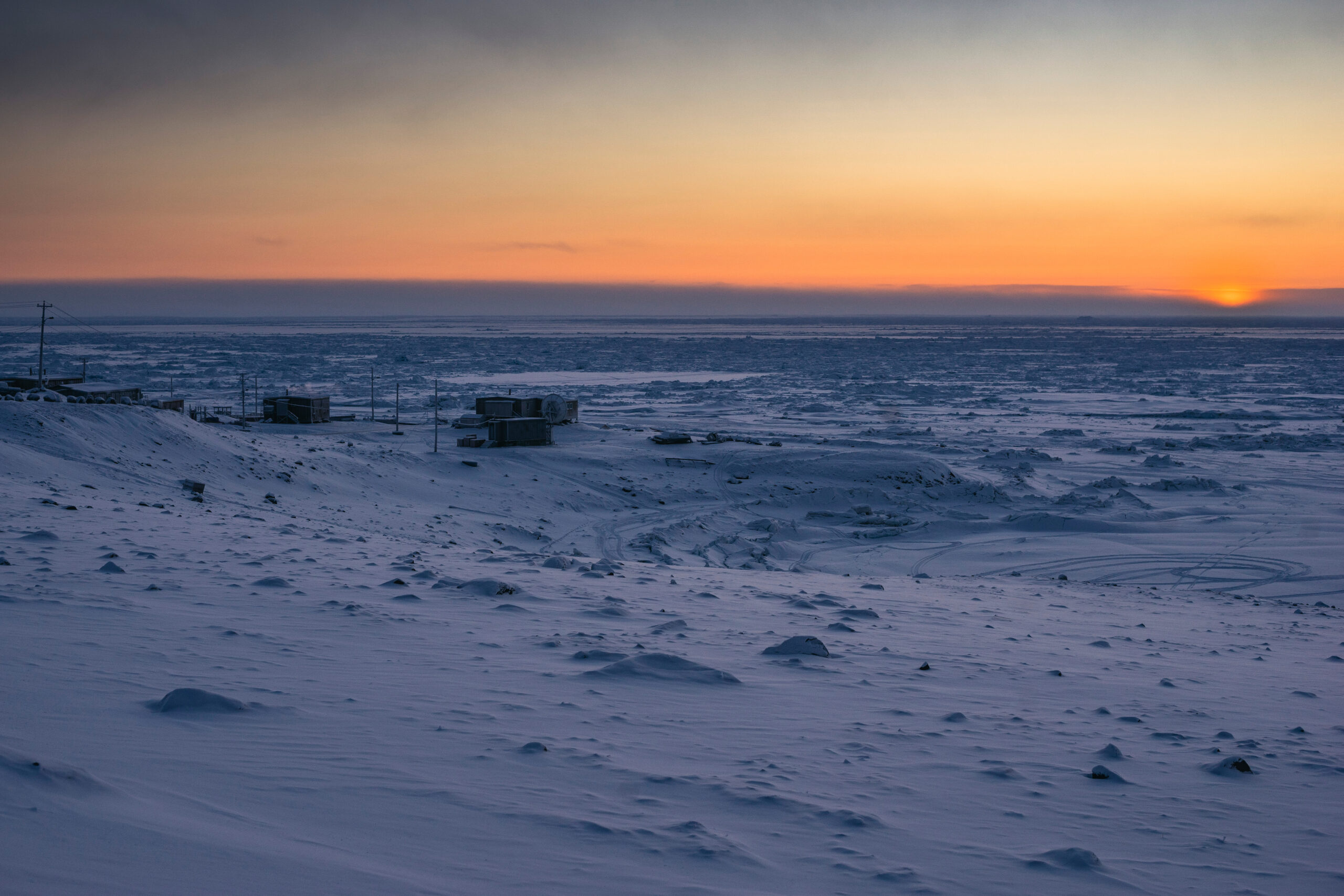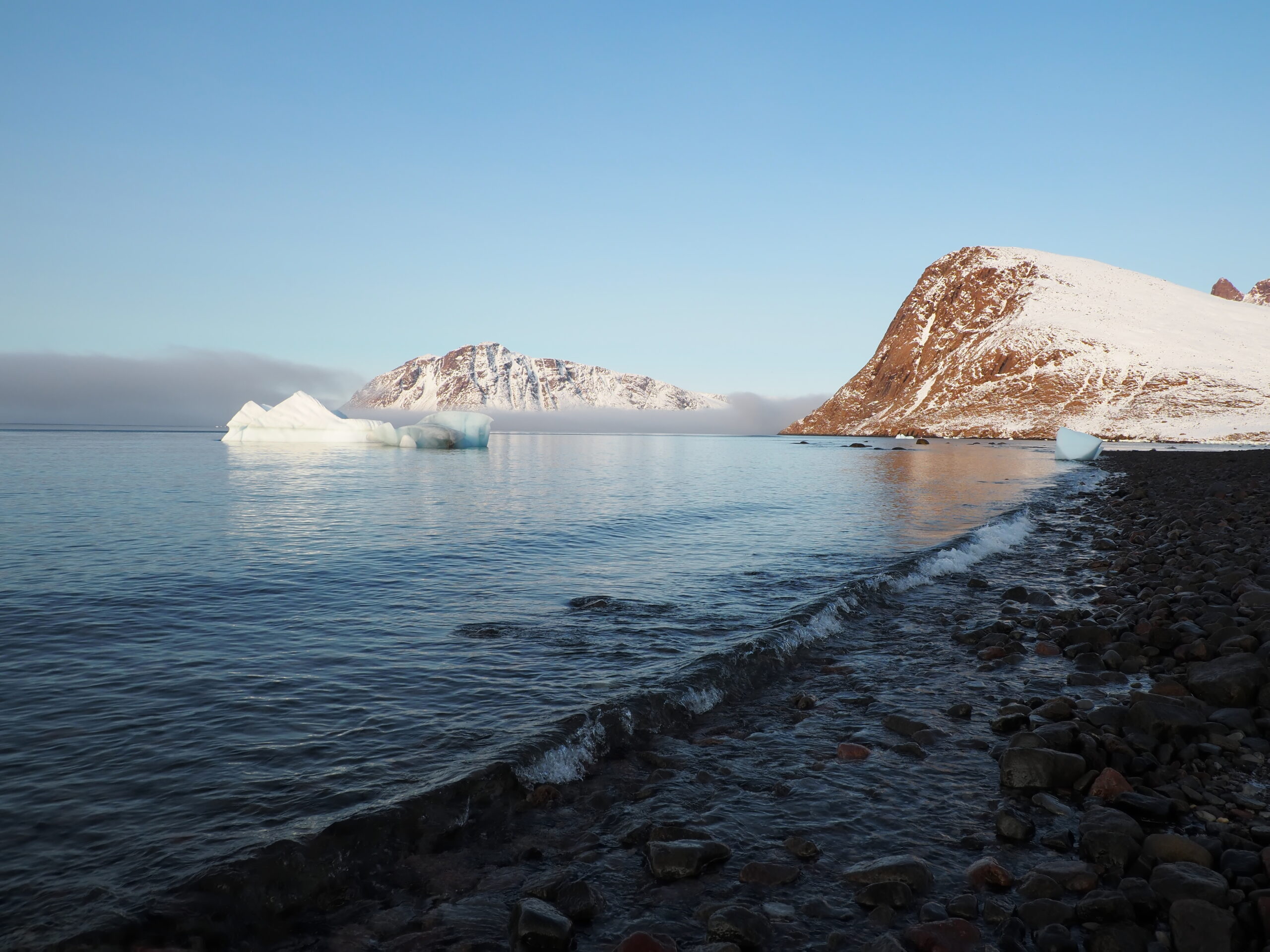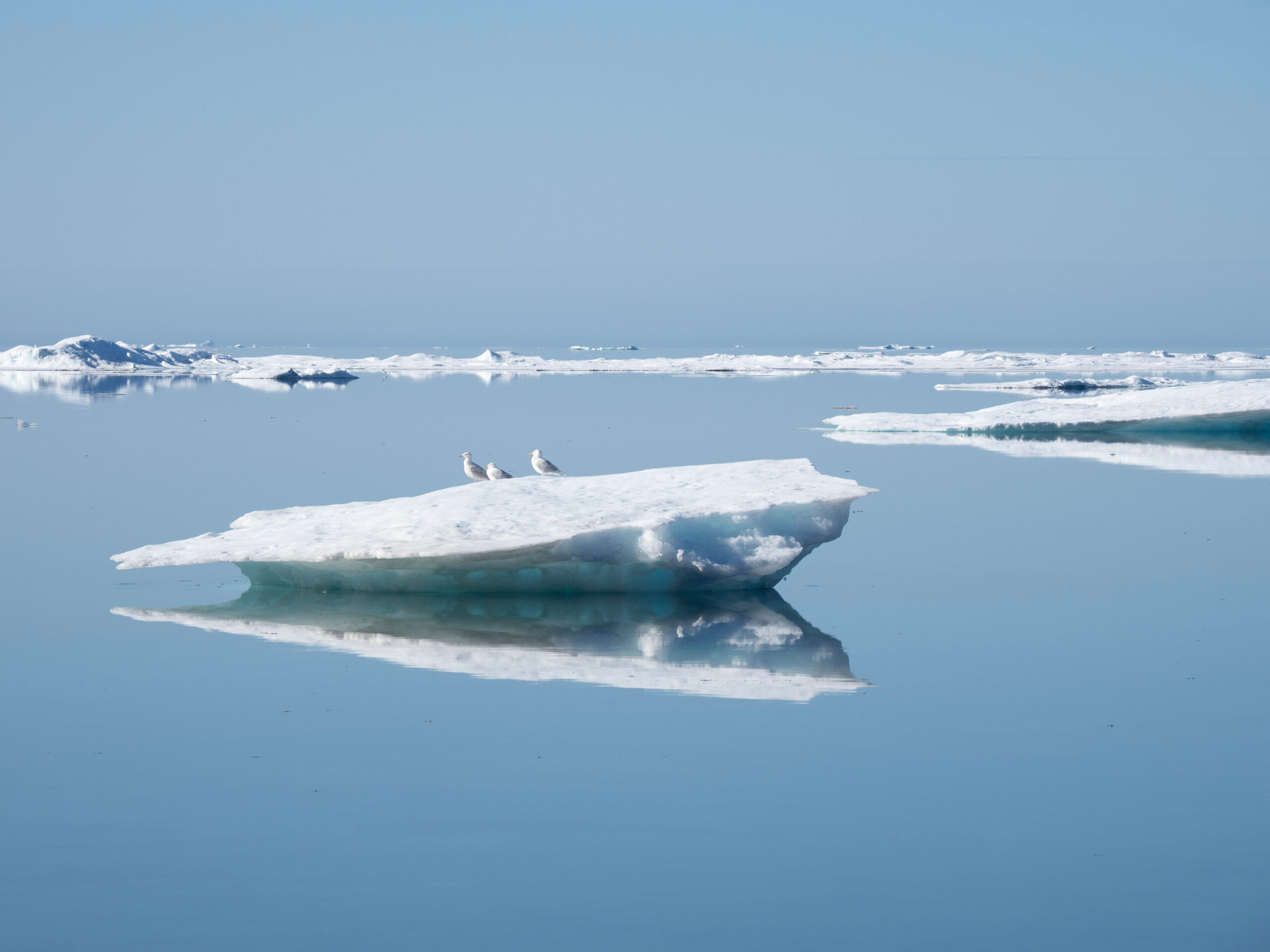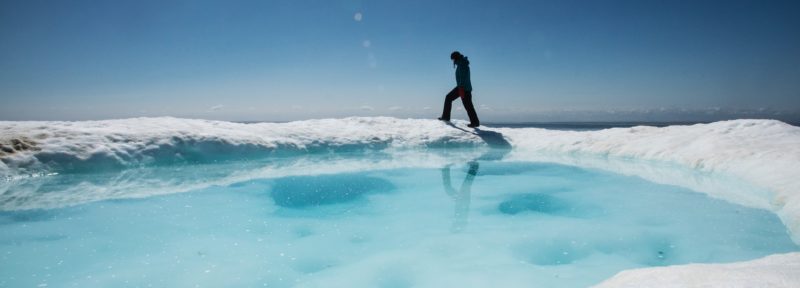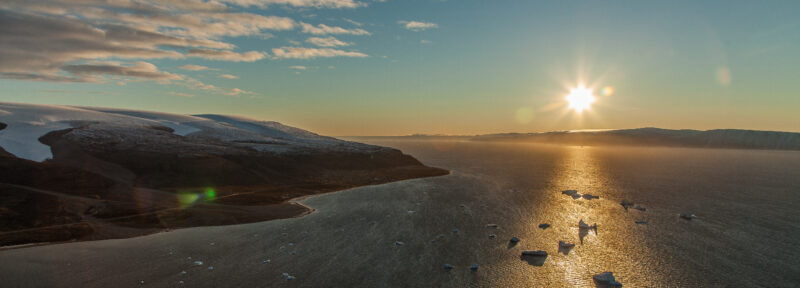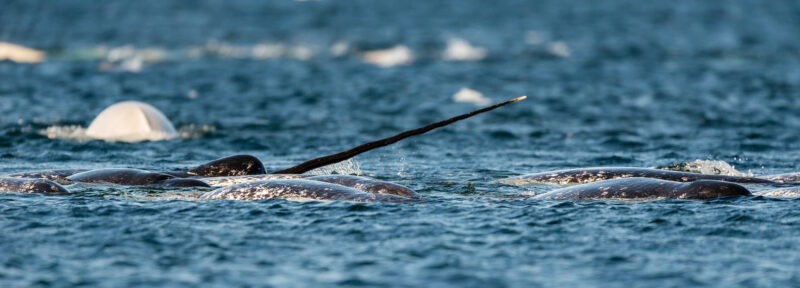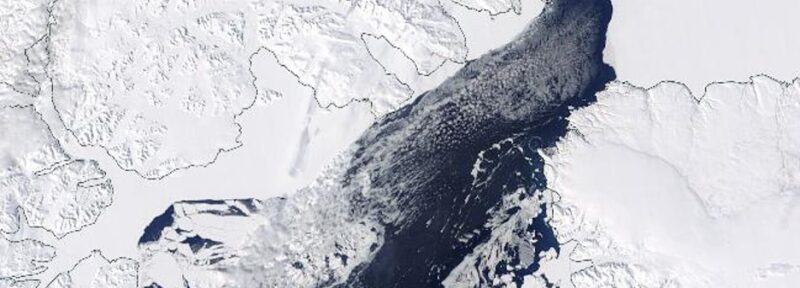The Ice Bridge: Predicting the Future of the North Water Polynya
The first sunrise of the new year in Grise Fiord.
Crédit : Adobe Stock
Welcome back to the Ice Bridge, a series about the importance of the North Water Polynya. Through interviews with experts in Canada and Greenland, we’re learning more about one of the Arctic’s most fascinating ecosystems.
Between Greenland’s west coast and Canada’s Ellesmere Island is Pikialasorsuaq, also known as Savarjuaq in Nunavut. The Arctic’s largest polynya, it is an invaluable point of connectivity between the Arctic and North Atlantic oceans and a rich ecosystem that has sustained Inuit in Canada and Greenland from time immemorial. However, climate change is affecting how and whether the polynya forms each year, which could have major impacts here and around the world.
To monitor these climate-driven changes, Paul Myers, a physical oceanographer at the University of Alberta, and a team of scientists use computer modelling and observational data to assess the current sea ice conditions, currents and glacial melt. Using this data, they aim to predict what a warming Arctic will mean for the polynya over the next 50 years and for climate systems beyond the north. This research involves the development of complex computer models based on mathematical equations representing processes in the real world. Data collected in the field is used to “ground-truth” those models.
“This region is changing so fast that we need continual observational data to reflect these changes,” said Myers, who has been studying the North Water polynya for a decade.
Some of that field data is now obtained through partnerships with local communities like Grise Fiord, where hunters collect ocean samples and do measurements during the winter months when harsh weather deterred researchers in the past. Myers said this all-season data is improving the accuracy of the computer modelling, which used to rely primarily on summer observations.
A beach in Grise Fiord, Ellesmere Island, in Nunavut.
Crédit : Adobe Stock
Myers and his team have developed computer models that reflect the current state of the polynya, including when it forms each spring, the length of its open-water season and its level of biological productivity. Researchers then use different scenarios from global climate models to drive a range of sea ice scenarios for Pikialasorsuaq in future decades. Since 2001, the data shows major changes in October sea ice formation in Baffin Bay, including a shift from mid-October to the end of the month in northwestern Baffin Bay.
One of the overall trends predicted by computer modelling is for less sea ice in the Polynya and thinner ice as well. That will affect the formation of the ice bridge at Nares Strait, which creates the Polynya by blocking thick, multi-year ice from the Arctic Ocean from streaming south. Without the ice bridge, the Polynya would have less open water during the winter, and its overall biological productivity would be affected, he said.
Seabirds perch on an ice floe.
Crédit : Adobe Stock
Sea ice acts as an insulator, so less ice cover in this region can also intensify weather patterns because of interactions between the air and ocean, leading to extreme cold or heat outbreaks at southern latitudes.
“What happens in the North Water region impacts the southern climate. It’s a two-way process that we’re studying between high latitude regions and other places,” Myers said.
Vanishing sea ice can also disrupt normal ocean circulation and cause increased erosion along exposed northern coastlines from stronger storms. Additionally, local communities that have relied on sea ice for hunting, fishing, and transportation will have their traditional way of life disrupted.
Their research predicts a warmer ocean in this region, as Atlantic currents transport warm water northwards. This will lead to more glacial melt and more mixing of freshwater and saltwater, affecting marine ecosystems like the polynya. Computer modelling indicates that the ocean will become more acidic as it absorbs increased CO2 from the atmosphere.
“There are all sorts of questions being asked about what the impacts of this will be,” Myers said.
When Myers began his research 30 years ago, scientists predicted that the Arctic Ocean would be ice-free in the summer by 2100. Today, computer modeling suggests that could happen as soon as 2030 to 2050.
Ruth Teichroeb is a regular contributor to Oceans North and former communications director. She is based in Sidney, B.C.

